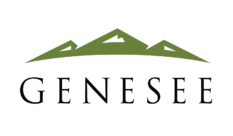Inventory/Mitigate/Harden/Evacuate
Harden

Harden your home. There are three ways your home can catch fire: by direct flames from a close fire, by radiant heat from a nearby fire, and by embers from a fire up to a mile away. While hardening means fire resistant siding and roofs to most people, it also includes treating a wooden deck or patio that could trap embers in crevasses and catch fire, and addressing vents in your eaves that could allow smoke or embers into your home.
Harden your home; decrease your risk of ignition.
Fire can take your home in three main ways:
Direct flames from a nearby fire (structure and/or vegetation) can heat your home to the ignition temperature. (The Marshall fire is an example when flames moved directly from house to house.)
Radiant heat from a nearby fire (structure and/or vegetation) can ignite your home in the same way as direct flames. (The Black Forest fire may be an example of burning vegetation heating homes indirectly.)
Embers from a fire as much as a mile away could lodge in crevasses or vents in a home and cause the structure to burn. (Very high winds during the Marshall fire are an example.) Pine needles and other debris in gutters are a big risk for ignition from embers. Gutters should be cleaned regularly.
While Jeffco building codes now require gutter covers, most covers are plastic and easily catch pine needles, so it is important to check even covered gutters for debris.
Harden your home.
While hardening means fire resistant siding and roofs to most people, it also includes treating a wooden deck or patio that could trap embers in crevasses and catch fire, and modifying or replacing vents in your eaves that could allow smoke or embers into your home.
While replacing original roofing and siding materials with fire-resistant or non-flammable materials is the most obvious, most effective, and most expensive way to harden your home, there are many other ways to protect against fire. The resources below have many suggestions of small, easy, and inexpensive ways to harden your home against the threat of wildfires.
Hardening resources: Information about enhancing existing homes.
Genesee Fire/Rescue Home Inspection Program
Genesee Fire/Rescue This is a professional evaluation of your home exterior and surrounding property to determine susceptibility to wildfire with recommendations for actions that can be taken to make your home more defensible. This program is a very good place to start to determine the hardening and mitigation that will be of most value.
The inspection is done by a local expert and is free.
Home Improvements to Reduce Wildfire Risks
CSU Extension video This rather long video [24m20s] covers both home hardening and property mitigation. If you are new to either concept it may be worth your time to gain a better understanding of all the issues involved in living in a fire-prone environment.
Low-Cost Retrofit List: Low-Cost Ways to Harden Your Home
CAL FIRE Even though this 2-page document with links is from California the recommendations are largely universal. Most of the suggestions can be easily done by a homeowner. Its value here is that it addresses refitting existing structures instead of new construction.
Wildfire Home Retrofit Guide
Tahoe Resource Conservation District This 20-page document is a California-Nevada joint effort, and like the document above, it has wide application for retrofitting existing homes. It goes into much more detail than the CalFire document.
FireWise Construction: Site Design & Building Materials
Colorado State Forest Service While this 40-page document is about new construction (and detailed…), it may provide some ideas about the features of your home that are at most risk, and perhaps what issues should be addressed first. You need not read the entire document; the Table of Contents is very helpful.
